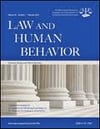
Social influence and antisocial predisposition in early childhood increase the potential for gun carrying in adolescence. This is the bottom line of a recently published article in Law and Human Behavior. Below is a summary of the research and findings as well as a translation of this research into practice.

Featured Article | Law and Human Behavior | 2018, Vol. 42, No. 2, 110 – 118
Childhood Risk Factors Associated With Adolescent Gun Carrying Among Black and White Males: An Examination of Self Protection, Social Influence, and Antisocial Propensity Explanations
Authors
Beardslee Jordan, Arizona State University
Docherty Meagan, Arizona State University
Mulvey Edward, University of Pittsburgh
Schubert Carol, University of Pittsburgh
Pardini Dustin, Arizona State University
Abstract
Adolescent gun violence is a serious public health issue that disproportionately affects young Black males. Although it has been postulated that differential exposure to childhood risk factors might account for racial differences in adolescent gun carrying, no longitudinal studies have directly examined this issue. We examined whether childhood risk factors indexing neighborhood crime, peer delinquency, and conduct problems predicted the initiation of adolescent gun carrying among a community sample of Black and White boys. Analyses then examined whether racial differences in risk factors accounted for racial differences in gun carrying. Data came from a sample of 485 Black and White boys who were repeatedly assessed from 2nd grade until age 18. Multi-informant data collected across the first 3 years of the study were used to assess neighborhood crime, peer delinquency, and conduct problems. Illegal gun carrying was assessed annually from 5th grade through age 18. Growth curve analyses indicated that children with higher initial levels of conduct problems and delinquent peer involvement, as well as those who increased in conduct problems across childhood, were more likely to carry a gun prior to age 18. Black boys were also more likely to carry guns than Whites. Racial differences were greatly reduced, but not eliminated, after controlling for initial levels of conduct problems and delinquent peer involvement. Findings suggest that early prevention programs designed to reduce adolescent gun violence (including racial disparities in gun violence) should target boys with severe conduct problems and those who affiliate with delinquent peers during elementary school.
Keywords
Adolescent gun carrying, racial disparities, self-protection, social influence, antisocial predisposition
Summary of the Research
“Studies examining risk factors for adolescent gun carrying have focused on self-protection, social influence, and antisocial predisposition explanations” (p. 110).
“The current study addresses these issues by examining (a) the extent to which childhood risk factors associated with self-protection (i.e., neighborhood crime), social influence (i.e., peer delinquency), and antisocial predisposition (i.e., conduct problems) models prospectively predict the initiation of adolescent gun carrying and (b) whether race differences in these childhood risk factors accounts for differences in adolescent gun carrying among a community sample of Black and White males” (p. 111).
Measures:
“At each assessment from fifth grade to age 17, boys self-reported whether they had carried a gun since the previous time-point using the Self-Reported Delinquency Scale” (p. 113).
“We used a subscale from the Neighborhood Impressions Questionnaire as an indicator of neighbor- hood crime” (p. 113).
“Peer delinquency was assessed via youth self-report at each assessment from Time 1 to Time 6 using the Peer Delinquency Scale” (p. 113).
“Early conduct problems were assessed using parent and teacher ratings on eight items from the Child Behavior Checklist and Teacher Report Form (respectively) from Time 1 to Time 6” (p. 113).
Results:
“Approximately 28% of Black boys reported carrying a gun prior to age 18 and 10% of White boys reported carrying a gun prior to age 18” (p. 114).
“This model indicated that there was significant between individual variability in the initial level of neighborhood crime, and the average level of neighborhood crime tended to decrease only slightly over time” (p. 114).
“On average, there was a slight decrease in boys’ self-reported peer delinquency from Time 1–6, whereas conduct problems showed a slight increase across the same time period. The variance of the intercept and slope values for both conduct problems and peer delinquency were statistically significant.” (p. 114).
“All growth factors indexing child risk factors were associated with higher odds of gun carrying when each growth factor was examined separately, except for the slope of peer delinquency, which was not significant” (p. 115).
“When adolescent gun carrying was regressed on all latent growth factors together, results demonstrated that individuals who started higher on peer delinquency and conduct problems (intercepts) had significantly higher odds of carrying a gun in adolescence” (p. 115).
“Additionally, boys who experienced greater increases in conduct problems throughout childhood also demonstrated higher odds of carrying a gun in adolescence. In contrast, the association between initial levels of neighborhood crime and adolescent gun carrying was nonsignificant” (p. 115).
“Analyses indicated that Black youth were significantly more likely to carry a gun in adolescence than White youth without adjusting for covariates. Consistent with the differential exposure hypothesis, Black youth also had significantly higher intercepts on all three risk factors (i.e., neighborhood crime, peer delinquency, conduct problems) and a more rapid increase in conduct problems across time compared to Whites ” (p. 115).
“Indirect effects analysis indicated that approximately 36% of the race effect on gun carrying was attributable to differences in initial levels of peer delinquency, and approximately 24% of the race effect on carrying was attributable to differences in initial levels of conduct problems. Together, these two indirect paths accounted for approximately 60% of the effect of race” (p. 115).
“To help illustrate the patterns of change over time in the risk factors and the associations between the growth factors and adolescent gun carrying, we conducted LCGMs [Latent Class Growth Models] for each of the risk factors and examined the associations between the LCGM groups and adolescent gun carrying. Results indicated that four-group solutions were best for neighborhood crime and conduct problems but a three-group solution was best for peer delinquency” (p. 115).
“For neighborhood crime and peer delinquency, the two highest groups were significantly more likely to carry a gun in adolescence than the lowest groups” (p. 115).
“For conduct problems, the high-increasing group was significantly more likely to carry a gun than all other groups. Additionally, the high-decreasing group and the low-increasing group were significantly more likely to carry a gun than the consistently low group” (p. 115).
Translating Research into Practice
“Lending some support to the social influence and antisocial predisposition pathways, results demonstrated that boys who consistently affiliated with delinquent peers and exhibited high or increasing conduct problems during elementary school years were at highest risk for carrying a gun during adolescence” (p. 116).
“Early affiliation with delinquent peer groups might entrench young boys in delinquent social networks where gun carrying and other serious violence is modeled and reinforced. This suggests that affiliation with delinquent peers throughout childhood might have long lasting consequences in terms of young boys’ beliefs and values about delinquency which can lead to gun carrying. It also suggests that gun carrying might emerge simply because of opportunity and exposure” (p. 116).
“The significant associations between initial level and change in childhood conduct problems with adolescent gun carrying also provide support for the antisocial predisposition hypothesis. This suggests that gun carrying represents an adolescent behavioral manifestation of an early emerging predisposition toward deviant behavior that is observable in early childhood” (p. 116).
“Consistent with prior research, gun carrying in adolescence is much more common among Black boys than White boys” (p. 116).
“It is important to note that the higher rates of conduct problems and delinquent peer involvement among Black boys is likely the result of a cascading array of early environmental risks that impact families living in impoverished minority communities. The present study provided some evidence in support of this, given that parents of Black boys reported significantly more neighborhood crime in early childhood than parents of White boys. Taken together, results suggest that the foundation for racial disparities in firearm violence starts in early childhood” (p. 117).
Other Interesting Tidbits for Researchers and Clinicians
“It was interesting that there was very little within-individual change in peer delinquency, although there were significant differences in where individuals started, which were maintained over the subsequent 3-year period” (p. 116).
“Consistent with the antisocial predisposition hypothesis, gun carrying might be the culmination of a gradual escalation of conduct problems, with gun carrying merely serving as a means to achieve broader antisocial goals in adolescence, such as intimidating or controlling victims” (p. 116).
Moreover, for the result that “gun carrying in adolescence is much more common among Black boys and White boys”(p.116), “One hypothesis assumes that racial differences emerge because minorities are more likely to experience certain risk factors than Whites (i.e., differential exposure models). The other hypothesis assumes that racial differences emerge because certain risk factors risk factors that minorities and Whites are equally exposed to have stronger influences on gun carrying for minorities than Whites (i.e., differential sensitivity models)” (p.117).
“Contrary to differential sensitivity models, there was no evidence that the associations between the risk factors and gun carrying differed between Black and White boys, which was consistent with a prior study examining racial differences in juvenile arrests” (p. 117).
“[F]uture studies should test both hypotheses when looking for potential explanations for racial disparities” (p. 117)
In addition, “[f]uture research should incorporate measures of youth-reported personally experienced crime and victimization to determine whether personally experienced victimization is more strongly associated with later gun carrying. Furthermore, the present study only examined the predictors of gun carrying, not firearm violence. Future research should examine the risk factors that distinguish youth who actually use a firearm to cause harm to another person” (p. 117).
Join the Discussion
As always, please join the discussion below if you have thoughts or comments to add!






















